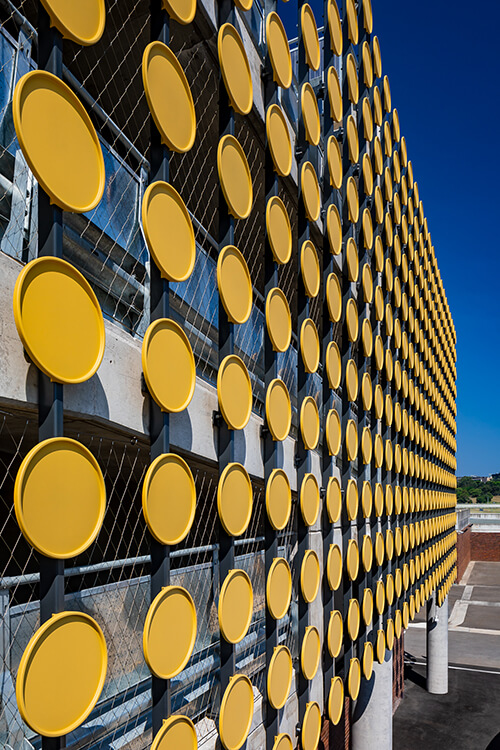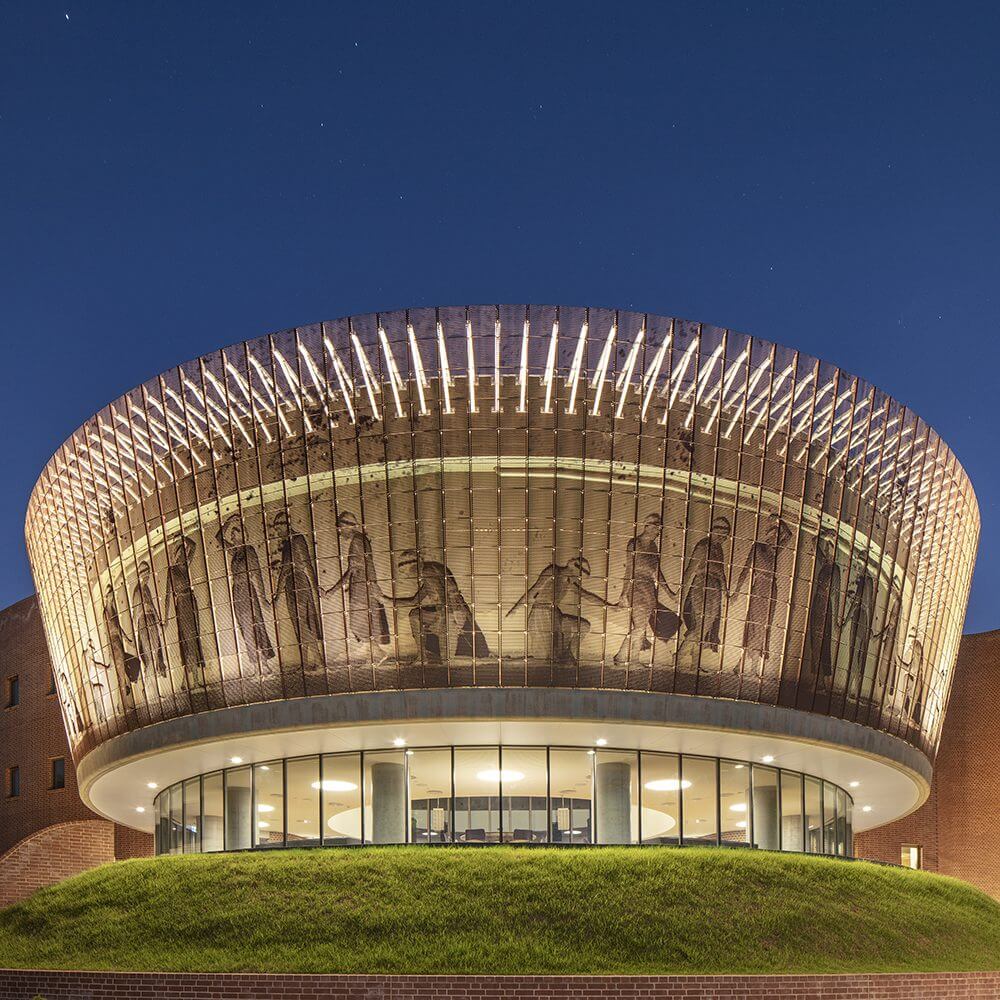Jakob’s Webnet mesh is not only cost-effective, lightweight, high-strength and pliable.
Its ability to be formed into a variety of shapes and configurations means it lends itself to all kinds of facade innovations.
- Set in either horizontal or vertical configurations, using a range of wire rope diameters and sleeve sizes.
- Left open with wire-rope end pairs, or else closed off with eye-ends or sleeves.
- In a variety of aperture opening sizes, and a range of geometric patterns such as diamonds, ovals, or slanted rectangles.
- Coloured to suit so it can match with existing décor or architecture.
- Unwoven with sleeves, or else woven without sleeves for even greater transparency and a filigree appearance.
- Using a mix of lengthways and widthways stretching in the same span.
- Stretched across frames much like a skin to create barriers without railings.
- Mounted or wrapped around many types of irregular or uneven surfaces.
It is these features of Webnet that distinguish it from other types of steel mesh. An example is Chainlink, which is made from galvanised steel wires, usually 2mm in thickness, that are bent and looped together. While it is a form of mesh, Chainlink is rigid and inflexible and offers no tensile resistance or load-carrying capacity. This puts a lot of limits on its uses.
Webnet mesh however is a facade material that offers almost limitless uses and allows for a wide range of pattern possibilities.

A facade with a unique pattern
Inner Sydney High is an example of the many vertical schools are appearing in our towns and cities. Opened in 2020, the school’s structure combines heritage buildings and a brand-new 14-storey tower.
Like many vertical schools, this school features open atrium design and offers a variety of learning spaces. This type of format needs robust safety barriers that won’t impact the openness of the design and that will foster a sense of community.
The school has gone one step further with its fall protection needs, by installing a Jakob Webnet barrier that has a complex diamond patterning. Each pattern section comprises a central diamond surrounded by smaller diamond and rectangular shapes. When viewed from different angles, the patterning changes as it reflects the light – varying from steps to checkered to flecked lines.
The overall result is a unique barrier that really pushes the visual limits while meeting all the strict safety codes required of a high-density school.
Artistic facade innovation
As well as being formed into various geometric shapes, Webnet can be used as a type of canvas to support artistic elements and patterns.
Some examples include this hotel facade in Switzerland, which uses Webnet ID plates coated with a reflective film to form a kind of giant billboard, and the copper panel facade at Sydney University Women’s College – a curved facade that supports a mural display.
There are myriad possibilities for facade innovations with Webnet. If you would like to know more, or you have a design in mind already, get in touch with our team for a discussion.







































